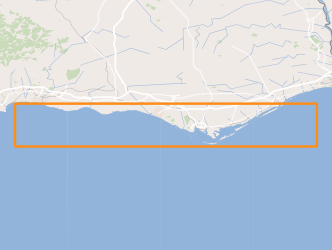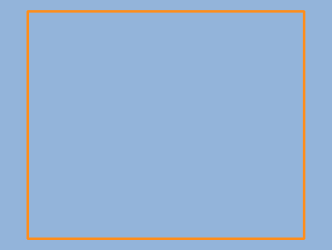Keyword
Habitats e biótopos
19 record(s)
Type of resources
Available actions
INSPIRE themes
Provided by
Years
Formats
Representation types
Update frequencies
Status
Service types
Scale
Resolution
geoDescCode
cartografia
geographicCoverage
geographicCoverageDesc
inspirecore
hvd
referenceDateRange
denominatorRange
resolutionRange
dataPolicy
openServiceType
dataType
dataFormat
-

The current artificial reefs were deployed, starting with a pilot project in 1990, in order to serve as instrument for the revitalization of coastal ecosystems, planning of coastal fisheries and integrated coastal zone management. Each reef is composed by, at least, 2940 concrete modules with a weight of 3 tons and 36 large modules with more than 40 tons each. The reef complex groups 20,748 modules (with a total volume of over 100,000 m3), occupying discontinuously a total area of approximately 43.5 km2, with an area of influence greater than 67 km2.
-

The Nazaré Artificial Reef deployed in 2010, covering an area of apr. 3 Km2 was a public project commissioned by the Nazaré Council, with the technical and scientific support of the multidisplinary research team from IPMA.
-
Web feature service with the information about the distribution and quantity of aquatic birds, including shorebirds, in order to meet the annual cycle of populations, fluctuations and trends of its population, as well as the importance of several wetlands for each species. This service relates to aquatic birds counts per section within Sado estuary, Tejo estuary and Ria Formosa.
-
Web feature service with the information about the distribution and quantity of aquatic birds, including shorebirds, in order to meet the annual cycle of populations, fluctuations and trends of its population, as well as the importance of several wetlands for each species. This service relates to aquatic birds counts for the coastal wetlands.
-
Mapeamento digital do habitat prioritário sebas (ervas marinhas – subtipos 1110pt2, 1110pt3 e 1110pt4 do habitat 1110 da Rede Natura 2000) do estuário do Sado, realizado no âmbito do projeto ORTOSado-2021 a partir de ortofotomapas RGBi de 0,2 x 0,2 m de pixel, produzidos pela Municipia S.A. nos dias 7 e 8 de outubro de 2021.
-
Web map service with the information about the distribution and quantity of aquatic birds, including shorebirds, in order to meet the annual cycle of populations, fluctuations and trends of its population, as well as the importance of several wetlands for each species. This service relates to aquatic birds counts for the coastal wetlands.
-
Web map service with the areas which, through scientific criteria, have been identified as important for the healthy functioning ecologically and biologically of oceans and the services that they provide.
-
Web map service with the information about the distribution and quantity of aquatic birds, including shorebirds, in order to meet the annual cycle of populations, fluctuations and trends of its population, as well as the importance of several wetlands for each species. This service relates to aquatic birds counts per section within Sado estuary, Tejo estuary and Ria Formosa.
-
Web feature service with the areas which, through scientific criteria, have been identified as important for the healthy functioning ecologically and biologically of oceans and the services that they provide.
-
O CDG contém a cartografia de habitats naturais e seminaturais de 31 Zonas Especiais de Conservação: Barrinha de Esmoriz; Barrocal; Cabeção; Cabrela; Caia; Caldeirão; Cambarinho; Carregal do Sal; Cerro da Cabeça; Estuário do Sado; Estuário do Tejo; Fernão Ferro/Lagoa de Albufeira; Malcata; Minas de Stº Adrião; Monchique; Monfurado; Morais; Moura/Barrancos; Nisa/Laje da Prata; Paul de Arzila; Ria de Alvor; Ria de Aveiro; Ria Formosa/Castro Marim; Romeu; Samil; São Mamede; Serra da Gardunha; Serra da Lousã; Serra de Montejunto; Serras de Aire e Candeeiros; Sicó/Alvaiázere. A tabela de atributos da shapefile contém os seguintes campos: • CodSitio - Código da ZEC • Sitio_Nome – Nome da ZEC • Habitats - Códigos de todos os habitats identificados no polígono, por ordem decrescente do grau de cobertura, num máximo de 3 habitats • H1_Cod - Código do habitat 1 • H1_Nome – Nome habitat 1 • H1_Cobert - Grau de cobertura do habitat 1 • H2_Cod - Código do habitat 2 • H2_Nome – Nome habitat 2 • H2_Cobert - Grau de cobertura do habitat 2 • H3_Cod - Código do habitat 3 • H3_Nome – Nome habitat 3 • H3_Cobert - Grau de cobertura do habitat 3 • Fonte - Entidade produtora da informação • Esc_origem - Escala de origem da informação Códigos de preenchimento do campo H-cobert: Classes de cobertura: A - >75%; B – 30-75%; C - 0-30%
